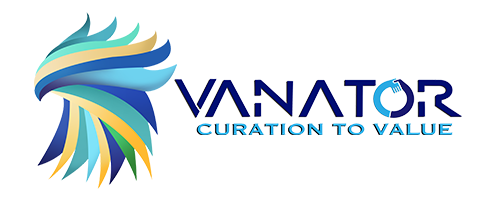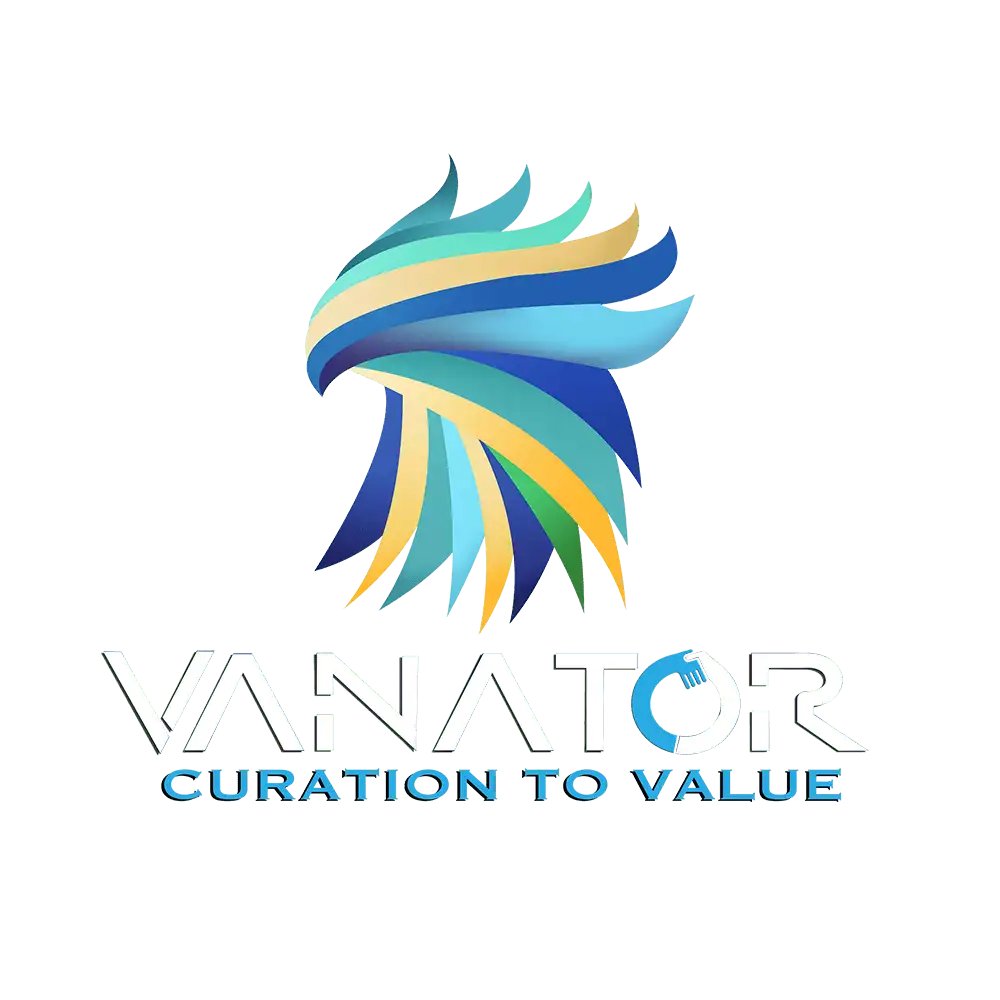Discover AI, SEO, and data-driven marketing hacks to grow recruiting firms in 2025. Boost hiring efficiency, brand visibility, and client engagement through smart digital strategies.
- Home
- Blogs
- Digital Marketing Hacks to Grow Recruiting Firms in 2025
Digital Marketing Hacks to Grow Recruiting Firms in 2025
Discover AI, SEO, and data-driven marketing hacks to grow recruiting firms in 2025. Boost hiring efficiency, brand visibility, and client engagement through smart digital strategies.
Key Takeaways:
The New Reality of Recruitment Marketing
AI-Powered Content Marketing and SEO Optimization
Programmatic Job Advertising for Maximum ROI
Short-Form Video Marketing Across All Platforms
Strategic Social Media Recruitment
AI Recruitment Automation and Chatbots
Data-Driven Recruitment Analytics
Employee Referral Program Optimization
Employer Branding and EVP Development
Content Marketing and Thought Leadership
Diversity, Equity, and Inclusion (DEI) Initiatives
Candidate Experience Optimization

Introduction
The recruitment landscape has undergone a seismic shift in 2025, with digital marketing emerging as the cornerstone of successful talent acquisition strategies. As 69% of organizations report difficulties recruiting for full-time positions and 74% of employers struggle to hire the right talent, recruiting firms must leverage innovative digital marketing tactics to stay competitive. This comprehensive guide reveals proven digital marketing hacks that will transform your recruiting firm’s growth trajectory in 2025.

The New Reality of Recruitment Marketing
The recruitment industry, now valued at $519.848 billion, faces unprecedented challenges: talent shortages, evolving candidate expectations, and economic uncertainty. Traditional “post-and-pray” job board strategies no longer deliver results. Modern candidates conduct extensive online research before applying—75% of job seekers investigate a company’s reputation before submitting an application. This fundamental shift means recruiting firms must embrace sophisticated digital marketing strategies to attract both clients and candidates.

AI-Powered Content Marketing and SEO Optimization
Artificial intelligence is revolutionizing how recruiting firms create and optimize content. AI-driven SEO tools like ChatGPT, Jasper, and Surfer SEO enable recruiters to accelerate content production while maintaining search engine optimization.
Implementation Strategy:
Use AI for comprehensive keyword research and competitive analysis targeting high-intent terms like “executive recruitment services [city]” or “tech staffing agencies near me”. Create semantic keyword clusters to develop topical authority in specific recruitment niches. Generate detailed content outlines that address candidate and client pain points while incorporating AI-assisted drafting with human oversight for authenticity. Optimize job descriptions with conversational long-tail keywords for voice search compatibility.
According to recent data, Google favors unique, easily understandable content that demonstrates expertise. While AI accelerates the drafting process, injecting your brand’s personality and industry insights creates the trustworthy, engaging materials that convert prospects into clients.
SEO Fundamentals for Recruiting Firms:
The dual-audience challenge—attracting both job seekers and employer clients—requires strategic keyword segmentation. Create separate content funnels with candidate-centric landing pages optimized for job-related queries (“marketing jobs in Toronto”) and employer-focused service pages targeting B2B terms (“recruitment agency for tech roles”).
Local SEO dominates recruiting in 2025. Optimize your Google Business Profile, target location-specific keywords, and ensure NAP (Name, Address, Phone) consistency across directories. Job seekers increasingly use “near me” searches, making local visibility essential for attracting both candidates and local clients.
Implement structured data markup to ensure your job listings appear in Google for Jobs results, capturing free organic traffic from active job seekers. This technical optimization can significantly increase visibility without additional advertising spend.

Programmatic Job Advertising for Maximum ROI
Programmatic recruitment advertising uses machine learning and AI to automate job ad buying, placement, and optimization across thousands of publishers. This technology-driven approach ensures qualified job seekers see relevant ads on the right channels at the optimal time and cost.
Why Programmatic Advertising Transforms Recruitment:
Traditional job advertising lacks transparency, with recruiters often unaware of true performance metrics beyond basic cost-per-click data. Programmatic platforms provide real-time visibility from clicks to applications to hires across all recruitment media—job boards, search engines, and social media.[9]
Clients using programmatic solutions typically see 20-50% reductions in cost-per-applicant and cost-per-hire while increasing qualified applicant volumes. The system continuously optimizes job ad placements based on hiring outcomes, automatically allocating budget to best-performing publishers and pausing non-performing channels.
Advanced Benefits:
Programmatic platforms enable sophisticated retargeting campaigns, re-engaging candidates who started but didn’t complete applications—a powerful capability for delivering high volumes of qualified applications at low cost. The technology also provides greater reach by identifying niche job boards and publishers you might not discover manually, expanding your talent pool globally.
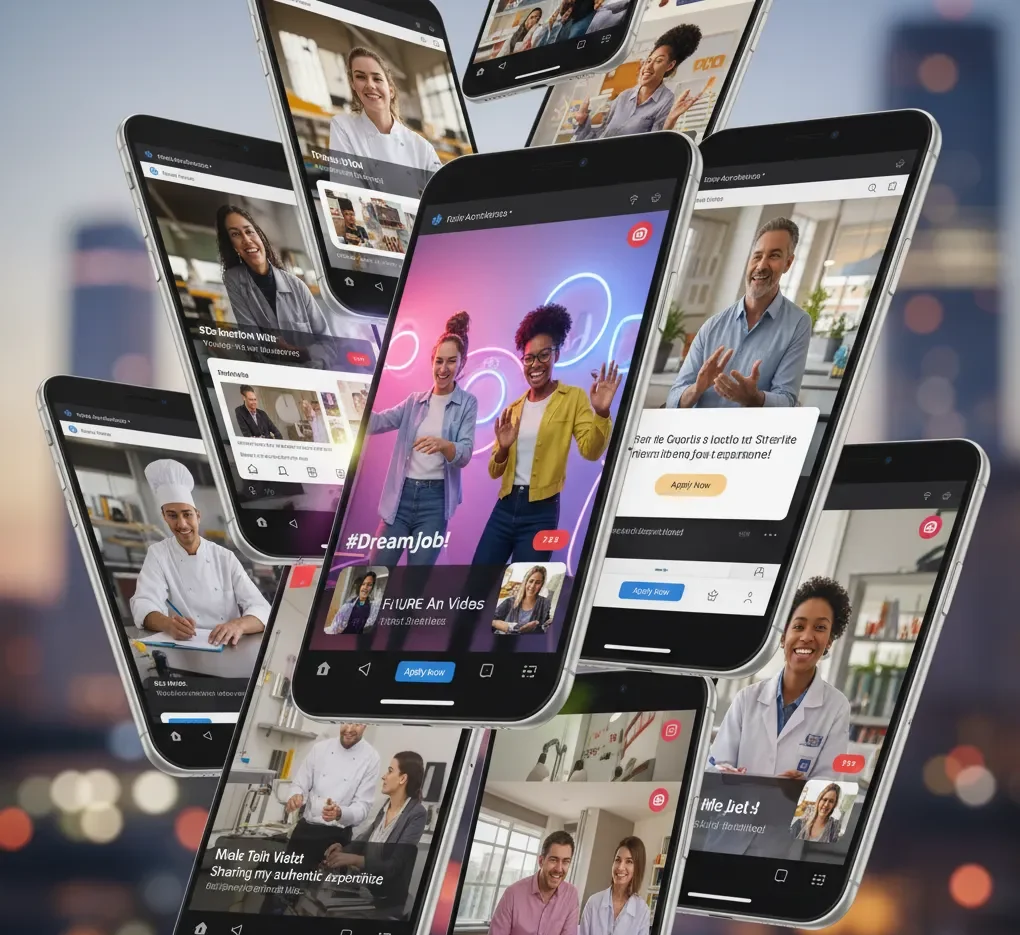
Short-Form Video Marketing Across All Platforms
Video content dominates social media in 2025, with recruitment video posts generating 200-300% more engagement than traditional text-based content. Short-form videos on TikTok, Instagram Reels, YouTube Shorts, and LinkedIn capture attention quickly and achieve higher completion rates across demographics.
Strategic Video Content Types:
Create employee testimonial videos showcasing real experiences and career progression to add authenticity and trust. Develop realistic job preview videos providing transparent views of daily responsibilities, including honest reflections on challenges and rewards. Produce company culture snippets highlighting work-life balance, team collaboration, and community involvement to attract candidates valuing holistic well-being.
According to research, 68% of people prefer learning about new products or services from short videos rather than other mediums. This preference extends to job opportunities, making video an essential component of recruitment marketing.
Production Best Practices:
Focus on storytelling that emotionally connects viewers to your employer brand. Maintain high production quality with strong visuals, clean audio, and seamless editing to reflect professionalism. Include clear calls-to-action directing viewers to apply or learn more. Keep videos concise—20-30 second clips perform best on social platforms.
AI-powered personalization now enables dynamic video content that adapts to individual candidate preferences, experience levels, and career interests. Advanced platforms modify video messaging and examples based on candidate data and behavior patterns, significantly improving engagement rates.

Strategic Social Media Recruitment
Social media recruiting has become indispensable, with 79% of job seekers using social platforms during their search. However, success requires platform-specific strategies rather than generic cross-posting.
Platform-Specific Approaches:
LinkedIn remains vital for professional roles, offering advanced search capabilities, industry groups, and direct engagement with passive candidates. Use LinkedIn’s targeting features to reach specific job titles, companies, and connections-of-connections. Share thought leadership content, industry insights, and behind-the-scenes glimpses to establish expertise.
Instagram and TikTok excel at reaching younger demographics and creative positions through visual storytelling. Post day-in-the-life content, employee takeovers, and culture-focused reels to showcase authentic workplace experiences. Use relevant hashtags to increase discoverability among target audiences.
Facebook maintains high user retention and works effectively for local candidates and community groups. Create dedicated recruitment pages, join industry-specific groups, and leverage Facebook’s demographic targeting for paid campaigns.
Critical Success Factors:
Employee advocacy amplifies reach—75% of recruiters report social media works best when current employees participate. Encourage team members to share job openings, discuss their experiences, and engage in social campaigns using branded hashtags.
Timing matters significantly. LinkedIn engagement peaks during weekdays, while Instagram thrives evenings and weekends. Use scheduling tools to optimize posting times based on platform-specific analytics.
Maintain consistency in tone, visuals, and posting frequency using content calendars. Mixed content keeps audiences engaged—share polls, quizzes, live Q&A sessions, and educational content beyond job postings.

AI Recruitment Automation and Chatbots
AI recruiting software and automation tools have improved time-to-hire by over 30%, according to Gartner research. These technologies handle repetitive tasks, allowing recruiters to focus on relationship-building and strategic initiatives.
Core AI Capabilities:
Candidate sourcing and screening: AI-powered matching automatically identifies best-fit candidates by scanning and ranking thousands of profiles based on skills, experience, and cultural fit. Machine learning algorithms analyze resumes with 87% accuracy, reducing manual review time by 3x.
Conversational AI chatbots:
Modern recruitment chatbots engage candidates 24/7, answering FAQs, collecting information, scheduling interviews, and conducting pre-screening assessments. Advanced chatbots use natural language processing to understand context and intent, providing personalized experiences that feel human.
Voice-enabled chatbots are emerging as particularly useful for hands-free interactions, automated phone screenings, and accessibility improvements. These bots assess candidate responses in real-time while navigating complex conversations beyond simple question-answer patterns.
Strategic Implementation:
Focus AI adoption on revenue-generating functions like candidate qualification—70% of fast-growth agencies prioritize this compared to 51% of all agencies. Ensure AI tools integrate with your ATS and CRM for seamless data flow and automated survey distribution.
While 40% of candidates feel uneasy about AI in hiring processes, transparent communication about how AI enhances rather than replaces human decision-making builds trust. Always maintain recruiter oversight to ensure fairness and reduce algorithmic bias.

Data-Driven Recruitment Analytics
Data-driven hiring has revolutionized modern talent acquisition, with 77% of talent professionals now relying on analytics to guide workforce decisions. Recruiting firms that embrace analytics gain competitive advantages through faster, smarter, and more objective decision-making.
Essential Metrics to Track:
Time-to-hire and time-to-fill: Monitor the days from job posting to offer acceptance to identify bottlenecks and streamline processes. Fast-growth staffing agencies track these metrics religiously to maintain competitive response times.
Cost-per-hire: Calculate total expenses including advertising, agency fees, and onboarding costs to optimize budget allocation. Understanding which sourcing channels deliver the best ROI enables strategic investment decisions.
Source-of-hire effectiveness: Measure which channels (job boards, referrals, social media, agencies) generate the highest quality candidates. This insight allows you to double down on high-performing sources and eliminate wasteful spending.
Quality-of-hire: Assess new hire performance through performance reviews, retention rates, and hiring manager satisfaction. This metric connects recruitment efforts to actual business impact, demonstrating ROI.
Candidate experience scores: Collect feedback through post-application surveys to identify friction points and improvement opportunities. Remember, 66% of applicants accept offers due to positive candidate experiences, while 26% reject offers due to poor communication.
Advanced Analytics Capabilities:
Predictive analytics uses machine learning to forecast which candidates will accept offers, predict future hiring needs, and anticipate retention risks. Prescriptive analytics provides recommendations for optimizing job postings, improving candidate engagement, and refining sourcing strategies.
Forward-thinking firms are investing in recruitment CRM platforms with built-in analytics dashboards tracking KPIs in real-time. These systems provide actionable insights that transform recruitment from a cost center to a strategic business partner.

Employee Referral Program Optimization
Employee referrals remain one of the most effective recruitment methods, with 82% of employers rating referrals as the best source for quality hires. Referred candidates are hired faster (29 days versus 39-55 days), stay 34% longer than degree-based hires, and are 15% more likely to remain for three years.
Fast-growth staffing agencies leverage this advantage—86% have formal referral programs compared to 60% of no-growth agencies, with 71% rating referrals as “extremely important” to business success.
Building High-Performance Referral Programs:
Simplify the process: Make referrals mobile-friendly with few-click submissions. Implement employee referral software platforms to streamline tracking and automate updates.
Offer compelling incentives: The average employee referral bonus in 2025 is $2,500, but consider diverse rewards like gift cards, extra vacation days, or experience-based incentives to boost engagement. Increase bonuses for hard-to-fill positions—32% of companies using this strategy saw 20% faster fill times.
Integrate into company culture: Referrals should feel valued, not like an add-on task. Host “Referral Days” where employees meet with talent acquisition teams to review open positions and identify network matches. Use video platforms like Vouch to highlight success stories where referred candidates became top performers.
Prioritize strategic roles: Focus referral efforts on high-impact positions critical to growth or with hard-to-find skills. Regularly communicate which positions are open through company intranets, emails, and team meetings.
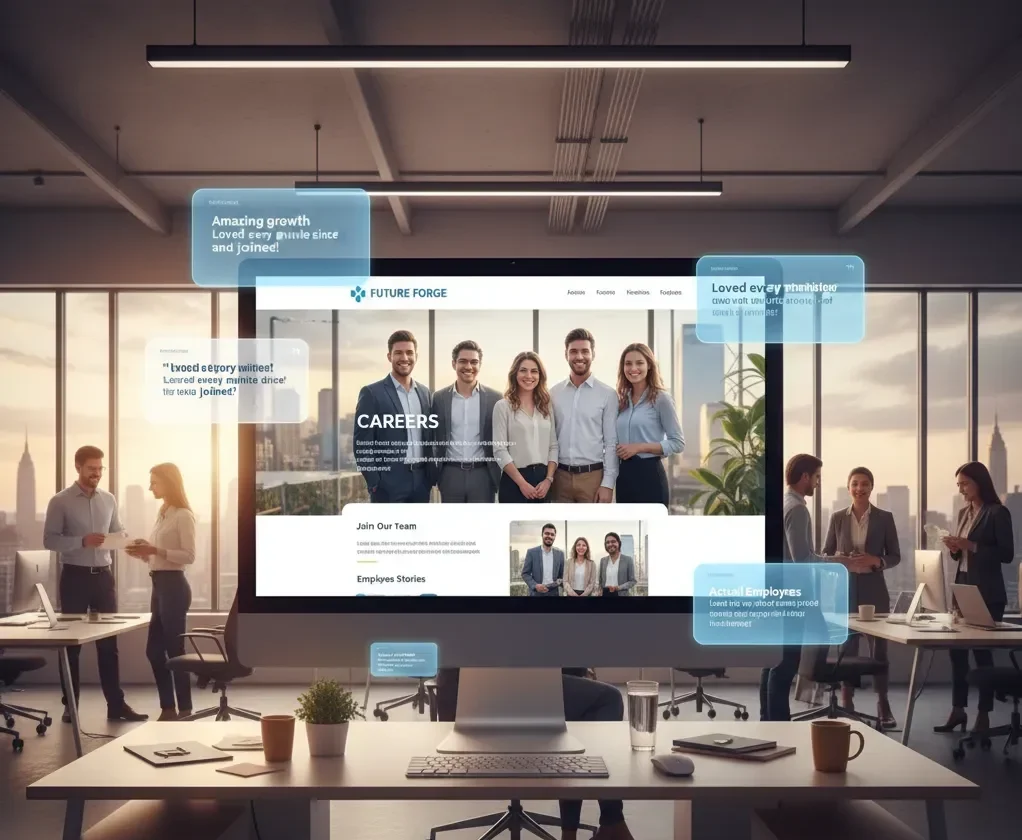
Employer Branding and EVP Development
Your employer brand defines candidate perceptions long before first contact. In 2025, candidates prioritize companies aligning with their values, offering growth opportunities, and promoting work-life balance.
Building Authentic Employer Brands:
Leverage employee advocacy and storytelling: Employees humanize your brand through authentic experiences. Use video testimonials, blogs, and behind-the-scenes content to showcase diverse career journeys and organizational values. Employee-generated content carries greater credibility than corporate marketing messages.
Optimize your careers site: Ensure user-friendly, SEO-optimized, mobile-accessible design that simplifies navigation. Incorporate real employee testimonials, diversity commitments, and clear EVP messaging throughout career site content. Research shows 60% of job seekers use career sites and employer-branded content to learn about companies before applying.
Develop compelling EVP (Employer Value Proposition): Your EVP articulates the unique benefits and opportunities your organization offers employees. Align EVP messaging with core elements like career growth, company culture, industry-leading benefits, or work-life balance. Ensure consistency across all touchpoints—from job descriptions to interview experiences to onboarding.
Monitor employer review platforms: Actively manage your presence on Glassdoor, Indeed, and similar sites to shape candidate perceptions. Respond professionally to reviews and address concerns transparently.
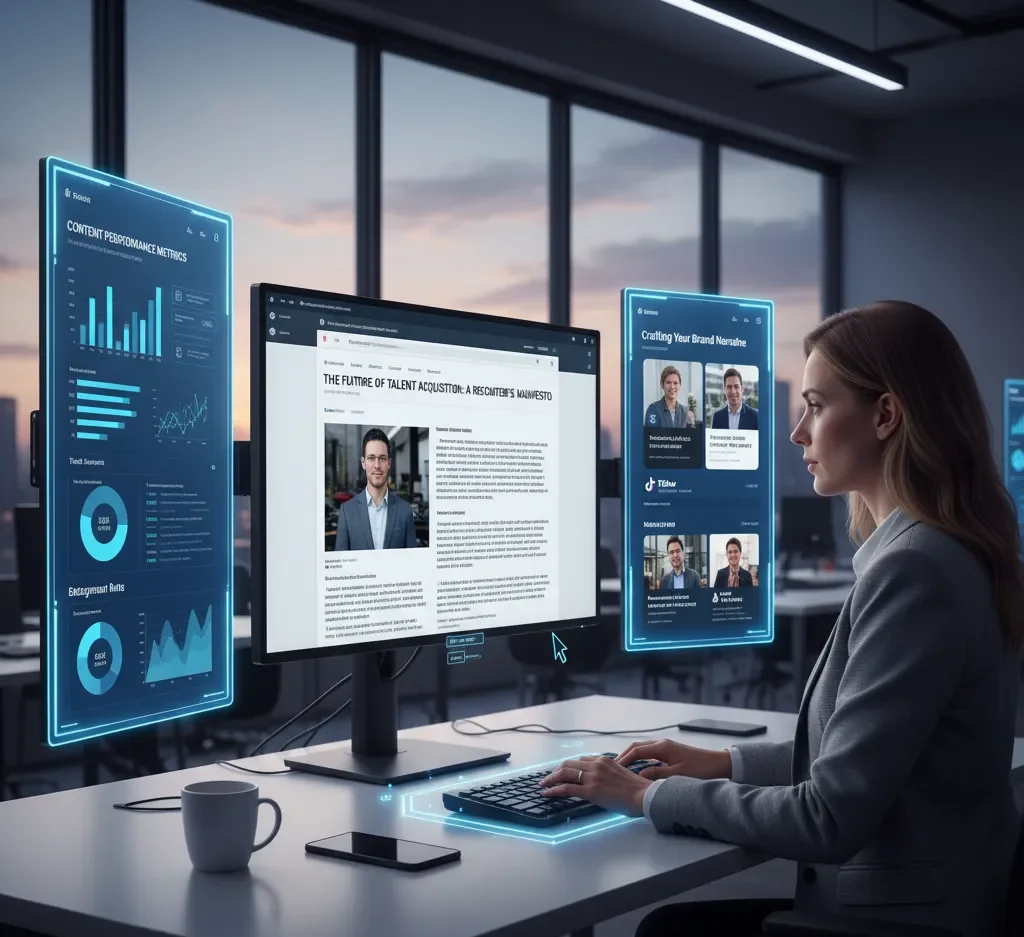
Content Marketing and Thought Leadership
Content marketing attracts candidates and clients organically without hefty advertising budgets, making it cost-effective for firms with limited resources. High-quality content establishes your agency as a trusted advisor rather than just another service provider.
Strategic Content Types:
Long-form blog posts: Create 3000-5000 word SEO-optimized articles addressing client pain points like “How to Hire Software Engineers in 2025” or “The Complete Guide to Remote Workforce Management”. Answer high-intent questions candidates and clients search for (“How to choose a recruitment agency”).
Industry reports and salary guides: Publish data-driven reports showcasing market insights, hiring trends, and compensation benchmarks. These valuable resources position your firm as an industry authority while generating backlinks from other sites.
Employee spotlight content: Feature real employee stories through surveys and video interviews using platforms like Rally Inside. Authentic narratives resonate more deeply than promotional messaging.
Educational resources: Develop downloadable eBooks, white papers, and templates addressing specific challenges. Gate these premium assets behind lead capture forms to build your email list while providing value.
Email Marketing Excellence:
Email delivers up to 10x better results than social media campaigns when executed properly. Build segmented email lists capturing name, location, industry, and job title to enable personalized messaging.
Develop distinct email campaigns for different audiences—sales emails engaging prospects, marketing emails nurturing leads with insights, and recruitment emails targeting candidates with career tips and opportunities. Use dynamic content to automatically tailor messages based on recipient data, increasing relevance and engagement.
Personalization extends beyond names—41% of email views occur on mobile devices, making responsive design essential. Adding recipient names to subject lines increases open rates by 9.1%.

Diversity, Equity, and Inclusion (DEI) Initiatives
Diversity recruitment has evolved from optional to essential in 2025, with companies treating inclusion and equity as core business strategies. Organizations prioritizing DEI see measurable benefits—highly inclusive companies generate 2.3x more cash flow per employee, 1.4x more revenue, and are 120% more capable of meeting financial targets.
Implementing Effective DEI Strategies:
Remove bias from job descriptions: Use inclusive language tools to identify and eliminate potentially exclusionary words or phrases. Inclusive job posting language increases applications from underrepresented groups by 24%.
Adopt blind screening processes: Remove names and demographic information from resumes during initial reviews to focus on skills and qualifications. AI-driven recruitment has increased selection of women and minorities by 27% compared to traditional methods.
Expand sourcing channels: Partner with diversity-focused job boards, professional associations, and educational institutions serving underrepresented communities. Build relationships with organizations like historically Black colleges and universities (HBCUs) and women in tech groups.
Implement structured interviews: Use standardized questions and evaluation criteria to ensure fair, merit-based assessments. This approach reduces unconscious bias while improving candidate experience through consistent treatment.
Showcase DEI commitment: Highlight diversity initiatives, employee resource groups, and inclusive policies on career sites and social media. Transparency about DEI progress (or honest acknowledgment of areas for improvement) builds trust with candidates from diverse backgrounds.

Candidate Experience Optimization
Candidate experience has become a critical differentiator in competitive talent markets. A positive experience increases offer acceptance by 38%, while poor experiences can cost millions in lost revenue and damaged reputation.
Enhancing Every Touchpoint:
Streamline applications: Simplify forms, enable one-click applications via LinkedIn, and ensure mobile optimization. Remember, 33% of candidates abandon applications requiring one-way video interviews, finding them impersonal and time-consuming.
Communicate transparently: Set clear expectations about hiring timelines and process stages. Provide regular updates—70% of candidates value prompt communication throughout the process. Avoid long gaps that signal disrespect for candidates’ time.
Personalize interactions: Have hiring managers reach out directly to top candidates, demonstrating genuine interest. Avoid mass emails that make candidates feel unimportant.
Collect and act on feedback: Use post-application surveys and exit interviews to identify bottlenecks and improvement opportunities. Tools like Lattice and Jive Insights provide actionable candidate experience data.
Salary transparency: 47% of candidates prefer seeing salary information before applying. Transparency about compensation, benefits, and role expectations reduces drop-off rates and improves candidate satisfaction.

Building Robust Talent Pipelines
Talent pipeline development—proactively identifying and engaging potential candidates for future openings—has become essential as 69% of organizations struggle to fill positions. Rather than reactive hiring, pipelines enable strategic talent acquisition that reduces time-to-hire and improves hiring quality.
Strategic Pipeline Development:
Conduct workforce planning: Analyze upcoming projects, expansion plans, and market changes to identify future talent needs. Forecast internal movements, retirements, and turnover trends to maintain continuity.
Create candidate personas: Define ideal candidate profiles including qualifications, experience, skills, motivations, and career goals. This clarity enables targeted outreach that resonates with desired talent.
Source proactively across channels: Use LinkedIn, referrals, networking events, and industry-specific boards to discover candidates. Engage passive candidates—professionals not actively job-hunting but open to opportunities.
Build talent communities: Create forums where professionals interact with your brand, establishing long-term relationships. Host virtual events, webinars, and Q&A sessions to maintain engagement.
Nurture relationships systematically: Use CRM platforms to automate personalized nurture campaigns highlighting project work, learning opportunities, and company culture. Quarterly touchpoints keep your firm top-of-mind without overwhelming contacts.
Companies like RingCentral building candidate pipelines with data-driven approaches report higher conversion rates and more motivated hires. Microsoft and Google fund upskilling programs to fill pipelines with skilled candidates aligned to future needs.

Conclusion: Integration and Continuous Optimization
The most successful recruiting firms in 2025 don’t implement these digital marketing hacks in isolation—they create integrated strategies where tactics reinforce each other.AI-powered content feeds SEO and social channels; programmatic advertising complements organic social recruiting; employee referrals strengthen employer branding; data analytics inform continuous optimization across all channels.
Start by assessing your current digital marketing maturity, identifying gaps, and prioritizing high-impact initiatives aligned with your business goals. Whether laying foundations with basic SEO and social media or scaling advanced programmatic advertising and predictive analytics, the key is consistent execution and measurement.
Fast-growth recruiting agencies achieving 21%+ revenue growth share three characteristics: strategic technology investment (62% plan new software purchases versus 37% overall), formal referral programs (86% versus 60% of no-growth agencies), and AI adoption prioritizing revenue-generating functions. These data points illuminate the path forward for firms seeking competitive advantage in 2025’s challenging recruitment landscape.
The recruiting firms that thrive in 2025 will be those embracing digital transformation, investing in technology and data capabilities, and relentlessly optimizing candidate and client experiences. By implementing these proven digital marketing hacks, your recruiting firm can attract more clients, engage better candidates, and achieve sustainable growth in an increasingly competitive marketplace.
Frequently Asked Questions (FAQs)
Digital marketing is critical because it helps recruiting firms reach and engage a broader talent pool and potential clients efficiently. With over 75% of job seekers researching companies online, firms must build a strong online presence to attract high-quality candidates and stand out in a competitive market.
Key strategies include social media marketing on platforms like LinkedIn, Facebook, and Instagram; search engine optimization (SEO) targeting recruitment-specific keywords; programmatic advertising optimized by AI; video content showcasing company culture; and employee referral programs supported by digital tools.
AI enhances recruitment marketing by automating repetitive tasks such as candidate sourcing and screening, personalizing content and communication at scale, optimizing ad bidding and placement, and providing data-driven insights for continuous campaign improvement.
Content marketing builds thought leadership and trust by addressing candidate and client pain points through blogs, videos, industry reports, and educational resources. High-quality content improves SEO, attracts organic traffic, and nurtures prospects throughout the recruitment funnel.
5. How important is candidate experience in digital recruitment marketing?
Candidate experience is vital; firms that communicate transparently, simplify applications, personalize interactions, and collect feedback see higher offer acceptance rates and better brand reputation. A positive experience differentiates recruiting firms and drives referrals and repeat business.
-
 AI-Driven SEO Tools and Services:Boosting Rankings with AI
AI-Driven SEO Tools and Services:Boosting Rankings with AI -
 Best Manufacturing Employment Agencies In USA
Best Manufacturing Employment Agencies In USA -
 Best Technical Search Engine Optimization Agencies in USA
Best Technical Search Engine Optimization Agencies in USA -
 Best Email Marketing Services in USA 2025
Best Email Marketing Services in USA 2025 -
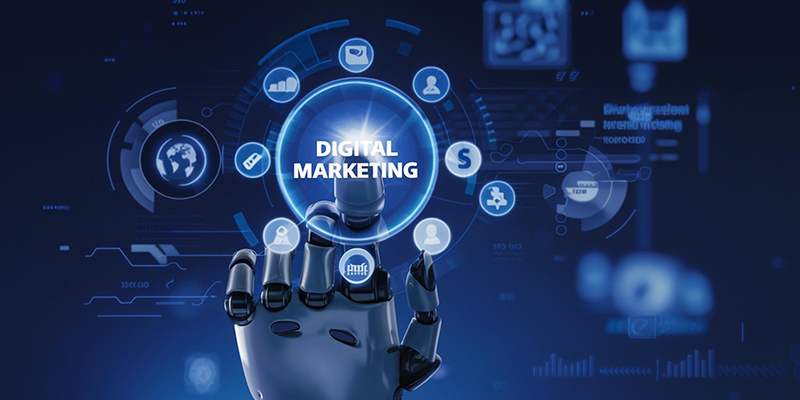 Best AI-Driven Digital Marketing in USA 2025
Best AI-Driven Digital Marketing in USA 2025 -
 Best Social Media Marketing Services in New York 2025
Best Social Media Marketing Services in New York 2025 -
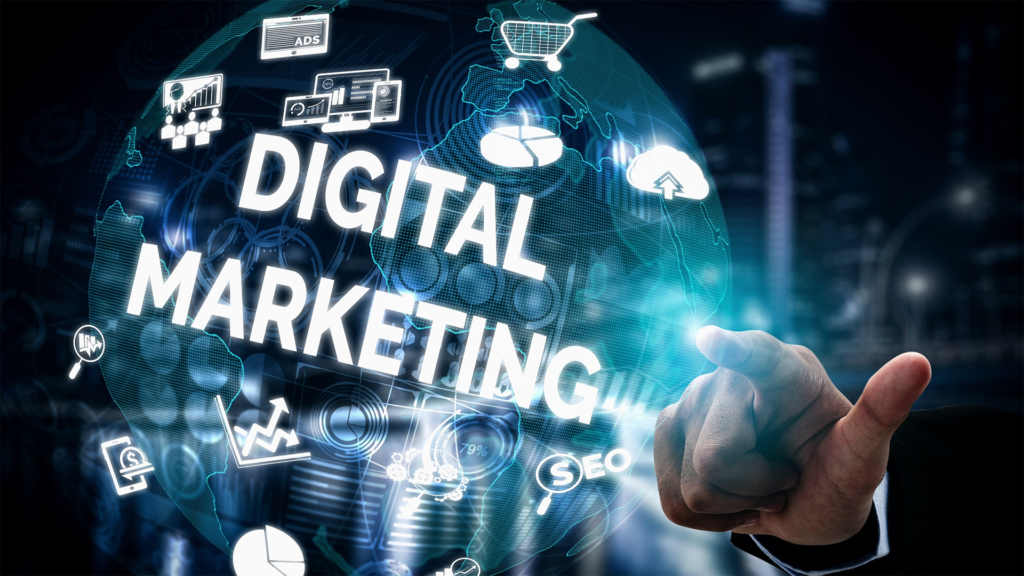 Best Digital Marketing Services in New York 2025
Best Digital Marketing Services in New York 2025 -
 Best Digital Marketing Services in Boston 2025
Best Digital Marketing Services in Boston 2025 -
 Best SEO Services in Boston 2025
Best SEO Services in Boston 2025 -
 Best Social Media Marketing Services in UAE
Best Social Media Marketing Services in UAE -
 Best Website Development Services in Dubai
Best Website Development Services in Dubai -
 Best Performance Marketing Services in Dubai
Best Performance Marketing Services in Dubai -
 Best SEO Services in Dubai
Best SEO Services in Dubai -
 Best Social Media Marketing Services in Dubai
Best Social Media Marketing Services in Dubai -
 Best Digital Marketing Services in Dubai
Best Digital Marketing Services in Dubai -
 Best Performance Marketing Services in Australia
Best Performance Marketing Services in Australia -
 Best Content Writing Services in Thailand
Best Content Writing Services in Thailand -
 Best Performance Marketing Services in Thailand
Best Performance Marketing Services in Thailand -
 Best SEO services in Thailand
Best SEO services in Thailand -
 Best Mobile App Development Services in Thailand
Best Mobile App Development Services in Thailand -
 Best Website Development Services in Thailand
Best Website Development Services in Thailand -
 Best Social Media Marketing Services in Thailand
Best Social Media Marketing Services in Thailand -
 Best Digital Marketing Services In Thailand
Best Digital Marketing Services In Thailand -
 Best Social Media Strategies in 2025 for Business Growth
Best Social Media Strategies in 2025 for Business Growth -
 Best Mobile App Development Services In Australia
Best Mobile App Development Services In Australia -
 Best Google Ads Services in Australia
Best Google Ads Services in Australia -
 Best SEO (Search Engine Optimization) services in Australia 2025
Best SEO (Search Engine Optimization) services in Australia 2025 -
 Best Email Marketing Services in Australia
Best Email Marketing Services in Australia -
 Best Graphic Design Services in Australia
Best Graphic Design Services in Australia -
 Top Content Writing Services in Australia
Top Content Writing Services in Australia -
 Top Social Media Marketing Services in Australia
Top Social Media Marketing Services in Australia -
 Best Digital Marketing Services in Australia
Best Digital Marketing Services in Australia -
 Best Website Development Services in Australia
Best Website Development Services in Australia
Also Read
Book a Free Consultation
Ready to elevate your customer experience? Don’t settle for ordinary support. Our dedicated consultants are standing by to match your enterprise with the highest-caliber customer service executives in the USA. From virtual assistants to specialized account managers, we have the expertise and talent pool to meet your needs.
Contact our team today to discuss how our tailored customer executive services can transform your support operations. Let us help you hire or outsource the best customer service executives in USA, so you can focus on growing your business with confidence. Together, we will build a world-class customer support team that drives loyalty and success.
